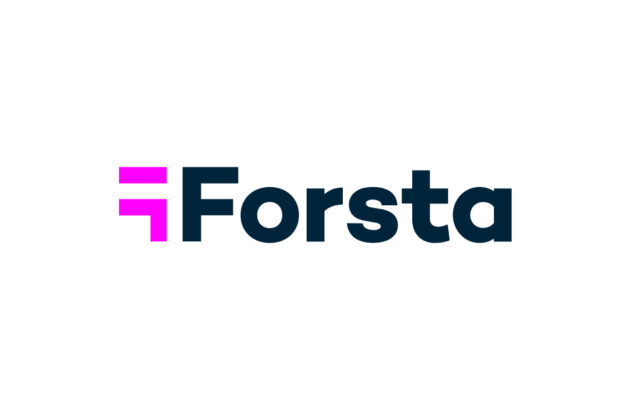Why CX programs matter: The proof is in the tech

Despite all the buzz around delivering a positive customer experience, some still see Customer Experience (CX) management as soft science, as more PR than performance. And you can’t blame them. Early CX programs were long on surveys and short on outcomes. For years, NPS ruled the roost, offering scores without context and feedback without follow-up. CX became the department that nodded politely, filed reports, and watched from the sidelines.
That’s no longer the case.
CX tech has revolutionized the sales journey. It’s now real-time, AI-powered, and built for impact. The companies earning customer loyalty today aren’t just listening; they’re analyzing, acting, and personalizing at scale. With the right tools, customer experience management (CXM) isn’t a cost center. It’s a competitive edge. And it drives measurable revenue. The data proves it. The results speak for themselves.
In this post, we’ll cut through outdated assumptions and show why CX programs matter and how technology is rewriting the rules. You’ll see how today’s most effective CX programs use AI, and real-time feedback loops to shift from passive measurement to active impact.
This isn’t theory. It’s a tested strategy that ties CX directly to revenue, retention, and reputation. If you’ve been waiting for proof that CX delivers, here it is.
Let’s start with a quick look at how we got here.
The evolution of CX tech: From passive to proactive
Not long ago, Customer Experience (CX) programs were built around a single question: “How likely are you to recommend us?”
That question wasn’t wrong; it was just one-dimensional.
Legacy CX relied on basic surveys, delayed feedback loops, and spreadsheets that measured feelings after the fact. Teams collected static data, wrapped it in a report, and hoped it trickled upward. Predictably, CX department ended up looking like a nice-to-have. Not a needle-mover.
CX was treated like a soft skill. A brand booster. A gut check. And because the data didn’t lead to action, the value wasn’t visible.
That’s changed. Radically.
The CX tech revolution: Activating intelligence in real time
Today, the smartest CX programs are built on speed, scale, and smarts. Thanks to a wave of AI innovation, CX has broken free from the survey silo. It now lives where your customers live, across mobile apps, digital channels, call centers, in-store touchpoints, and everywhere in between.
This evolution isn’t cosmetic. It’s a complete rewire of how brands understand and respond to customers, and it includes:
- AI-driven sentiment analysis doesn’t just ask how someone feels—it reads tone, urgency, and emotional nuance across thousands of interactions, from chat to call transcripts. AI goes a long way in overcoming data quality challenges, too.
- Machine learning spots patterns in customer behaviors and flags churn risks before the customer even thinks about leaving.
CX technology has evolved from reflective to responsive. Then it got predictive. Now, it’s prescriptive—recommending actions that actually move the needle.
Smart tools now flag friction points before they derail a customer journey. They surface which moments matter most, then help you shape those interactions in real time, across channels and at scale.
And this technology isn’t just improving CX. It’s exposing market gaps, revealing blind spots, and giving your teams an edge where it counts. That’s more than experience management. That’s competitive intelligence.
CX is now omnichannel, always-on, and business-critical
Customers no longer see brands as departments. They’re having one experience, across channels and interactions. From app to email to frontline staff, every interaction shapes satisfaction levels and long-term loyalty. With today’s CX platforms, businesses can finally see what their customers see, from end-to-end.
Modern platforms deliver:
- Omnichannel CX visibility, so teams can track and optimize every key customer touchpoint.
- Robust measurement models, so leaders get clear, comparative views of performance across channels.
- Real-time feedback loops, so frontline teams can solve complex issues as they happen, not after they escalate.
That’s how you build stronger customer relationships. That’s how you boost satisfaction. And that’s how CX drives growth—not for someday, but today.
When you get it right, the payoff is clear: customers stay longer, spend more, and bring others with them. Not because you asked them to but because the experience earned it.
CX isn’t just supporting your business. It’s steering it.
The tangible proof: How CX tech directly impacts business outcomes
It’s one thing to talk about improving customer experience. It’s another to show how it drives real business results. With the right technology in place, CX becomes a clear growth engine. It increases revenue, improves efficiency, and strengthens your reputation where it matters most. Here’s how the proof stacks up.
Revenue growth
Customer retention doesn’t happen by accident. It’s built when you listen well, act fast, and make every interaction count. That’s where tech-powered CX strategies prove their worth. They give teams the clarity to understand what customers need, and the tools to deliver it in real time.
DHL Global Forwarding is a great example. With operations in over 200 countries, they needed a way to bring consistency, insight, and action to their customer experience across borders. Using Forsta Visualizations, they built a Voice of Customer system that does just that.
Now, more than 1,500 team members in 68 countries are equipped with real-time feedback and personalized dashboards. Account managers get alerts when specific issues arise, while global leaders can track trends across markets and customer segments. Today, they have a CX program that strengthens relationships, improves satisfaction, and keeps high-value customers close.
That’s the kind of insight that drives loyalty and measurable growth.
Operational efficiency
Customer experience isn’t just about making people happy, but making operations smarter. When CX tools automate feedback loops and deliver insights in real time, teams stop wasting time on guesswork. They respond faster, focus on what matters, and spend more time solving problems than searching for them.
Cognita, a global group of more than 100 schools, proves what’s possible when CX becomes part of the daily workflow. With over 80,000 students and 15,000 employees across 16 countries, their team needed a way to gather, understand, and act on feedback without adding to the workload.
Forsta’s platform was built to do the heavy lifting. Survey data flows in. Insights are instantly available. Schools get results at the click of a button, so leaders can act quickly and focus on delivering better experiences.
Cognita’s ‘Voice of the Parent’ program now tracks everything from first impressions to retention risks. If a parent might be considering a different school, the system flags it. If feedback reveals a problem, the right team sees it and responds. The platform deliver data but doesn’t stop there. It drives action.
This approach saves time, prevents issues from spreading, and creates a culture of continuous improvement. And when every school leader has the right insights at their fingertips, they spend less time reacting and more time leading.
That’s how automation turns insight into efficiency and drives better outcomes for everyone involved.
Brand reputation and customer advocacy
Building a brand isn’t as simple as telling people what you say it is. It’s what customers say when you’re not in the room, or on their feed.
Every interaction with a customer, from a store visit to a social post, adds to or subtracts from your reputation. A single poor customer experience can snowball across social media platforms, dragging down trust in hours. But when frontline employees are equipped with the right insights, they can turn frustration into loyalty, and customers into advocates.
That’s why real-time CX monitoring matters. It doesn’t just catch issues as they happen. It gives teams the context to fix them fast, before they spark bigger problems. It also helps spot patterns in service breakdowns or product pain points, which means fewer surprises and better-prepared reps.
One global sportswear powerhouse saw the stakes of this firsthand. With billions in revenue and a massive global footprint, they struggled to track customer perceptions across dozens of markets and retail partners. Reporting was inconsistent. Data quality was shaky, and the brand was missing out on key customer insights.
So they turned to Forsta.
With Forsta’s support, they built a gold-standard brand tracking program that gives their teams a real-time pulse on what people actually think, across retail channels, geographies, and customer types. The data now flows into one centralized system, replacing guesswork with clarity. When issues pop up, they’re not just seen. They’re solved.
This shift empowered internal teams and customer service reps to stay ahead of reputation risks. And when your employees know what matters to your customers, they don’t just avoid PR crises but help build a brand people believe in.
Because when you protect the customer experience, you protect the brand. And when you deliver on both, people talk for all the right reasons.
Actionable takeaways: How to prove your CX program’s value
Talk is cheap. If your customer experience strategy isn’t delivering real, measurable impact, it won’t survive the next budget meeting. Leadership doesn’t want promises; they want proof that your CX efforts drive retention, reduce churn, and grow revenue.
The good news? With the right tools and tactics, you can show exactly how CX fuels long-term business success. Here’s how to turn your program into a performance engine.
1. Use AI to work smarter, not slower
Artificial intelligence isn’t about flashy features. It’s about better decisions, made faster. With Forsta AI, your team can sift through mountains of feedback, spot patterns in customer behavior, and act in real time. This is how you catch churn risks before they escalate, and turn raw feedback into valuable insights, at scale. To learn more, see Forsta’s AI secret to explosive CX response rates for a deeper dive into AI-powered CX.
2. Link CX efforts to the bottom line
Want executive support? Speak the language of revenue. Connect satisfaction levels to renewal rates. Map journey friction to drop-off points. Show how a seamless experience increases retention, and how a bad experience costs you customers.
When your CX metrics tie directly to financial KPIs, the strategy gets the attention it deserves. Get our free ebook on CX Analytics to learn more.
3. Break free from survey-only thinking
NPS has its place, but it’s not the whole story. Customers interact with your brand across digital channels, in-app moments, frontline conversations, and support tickets. AI in CX helps you analyze all of it, not just the bits you ask about. That’s how you move from reactive to proactive, and from anecdotes to patterns.
4. Build real-time feedback into your operating system
Great CX isn’t just about collecting feedback; you must be able to take action instantly, across the brand.
- Set up real-time alerts.
- Route issues to the right teams. Track follow-up.
- Make sure every team, from marketing to ops to the service desk, has access to the same view of the customer.
That’s how you create consistent experiences and long-term trust. Read The business value of CX to learn more.
5. Make CX everyone’s job
Customer experience isn’t a single team’s responsibility. It’s the connective tissue of your business. Use your data to align teams, flag risks, and highlight wins. Bring customer expectations into planning meetings, product roadmaps, and performance reviews. If every function owns part of the experience, your entire organization starts working smarter.
Bottom line: CX strategy is business strategy. Companies that treat it that way see stronger customer relationships, lower churn, and smarter growth. Those that don’t? They lose the customer base they worked so hard to build.
Put your data to work. Prove the value. And make CX your clearest path to long-term success.
CX tech is no longer optional—It’s business-critical
The right CX tech drives profitable growth by turning real-time customer insights into smarter decisions, stronger retention, and consistent performance across every channel.
And the companies pulling ahead aren’t guessing what customers want. They’re using real-time data to deliver it, every time. They’re turning feedback into fixes, interactions into insights, and customer sentiment into measurable gains.
The proof isn’t just in how people feel. It’s in the numbers. Higher retention. Smarter operations. Stronger brand reputation. If you want to compete to win, you need a CX strategy built on intelligence, speed, and action.
Explore Forsta’s solutions for CX pros and turn customer feedback into business results that stick.
Related stories
Research HX deep dive: Data collection
Research HX deep dive: Data collection Smarter research starts with stronger data Every insight begins with a single data point. But when that data is scattered, inconsistent, or locked in outdated tools, the road to said insight is long, slow, and full of potholes. Data collection is the foundation of market research, yet inefficiencies cost […]

Research HX
Many feedback programs measure Net Promoter Score movements, but few can reveal the “why” of customer behavior. Forsta’s HX Benchmarks puts performance in context so you can understand what great experiences look like for your customers. Learn more about the human-centered intelligence you need to outperform the market.

The hidden dangers of non-integrated AI
The hidden dangers of non-integrated AI Artificial Intelligence is the darling of the research world right now. And rightly so! When done well, AI can accelerate analysis, boost productivity, and help research teams uncover deeper insights faster than you can say “machine learning.” But of course, there is a catch: Not all AI tools are […]

Learn more about our industry leading platform
FORSTA NEWSLETTER
Get industry insights that matter,
delivered direct to your inbox
We collect this information to send you free content, offers, and product updates. Visit our recently updated privacy policy for details on how we protect and manage your submitted data.